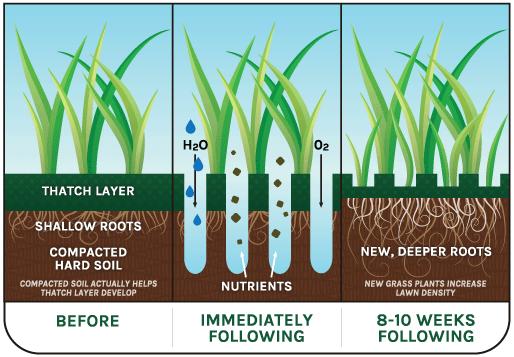Hi folks!
I hope the beginning of 2014 has been awesome for you. Even though our lawns are frozen solid and covered in snow right now, I've been thinking about ways to make them greener come Spring time.
I wanted to give everyone some good information about organic lawn fertilization, and the products I'll be using this year to achieve some healthy, green lawns. You may already be using my services for your lawn. If so, thanks a bunch! And...this will provide you with detailed information about what is already being applied to your lawn. If you're not fertilizing yet, I strongly encourage you to contact me soon so that we can set up a plan and schedule for your property in 2014.
Using a chemical fertilizer, you are applying food for your grass that is immediate and direct. No soil transformation has to take place in order for your grass to eat. However, you are actually depleting the soil of all of it's healthy nutrients. The grass simply depends on what you apply to the lawn. That is why some chemically treated lawns can be so temperamental throughout a season.
So...organic takes longer. That needs to be understood. Another reason why organic users need to be tolerant is because it's not perfect. Within the world of grub/pest control, weed control (crabgrass preventer), etc., organic treatments work to create an environment within the soil that isn't ideal or inhabitable for these unwanted issues. Chemical treatments simply 'kill' or destroy the issue at hand. That isthe goalI suppose. However, this also kills many beneficial nutrients in the process, and leaves you with a lawn that you can't be near because of associated health issues it causes. If you have young kids or pets, or are pregnant, you'd be crazy to have these chemicals around. (For more info on that, check my previous 'Another reason to go Organic with Lawn Care' post.) Never mind the fact that so many people burn their lawn with these products. They are so temperamental and harsh that if used incorrectly, you'll do some serious damage to your lawn. But once in a while, you may get the chemical balance correct, and achieve that perfectly lush, green lawn. You can achieve that with organic, it just takes a bit more time, and the plucking of some stray crabgrass once in a while.
 |
| Click here for more info! |
All in all, I'd love to talk to you more about these products and come up with a plan and schedule for making the investment in your own property.
Email me at eastconcordgrassroots@gmail.com, and don't forget to visit my website at www.eastconcordgrassroots.com.
Stay green!
James
 |
| Click here for more info! |









